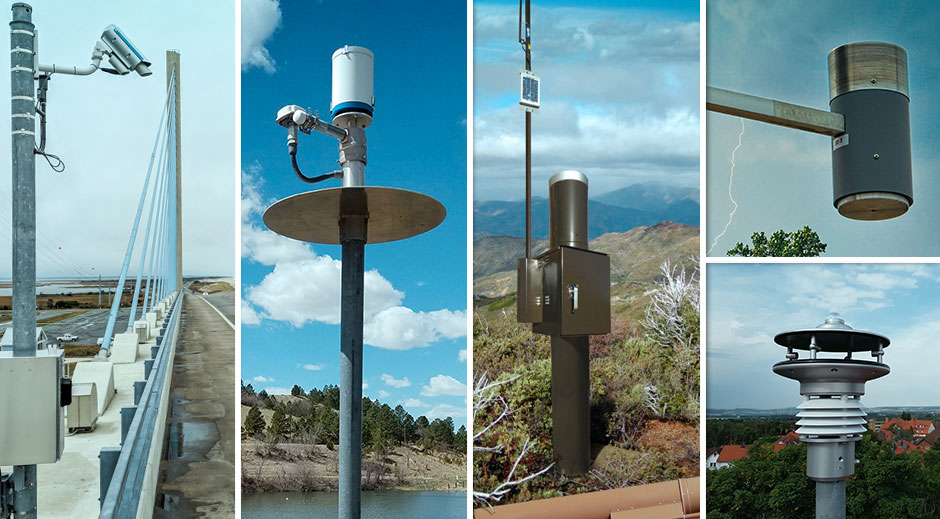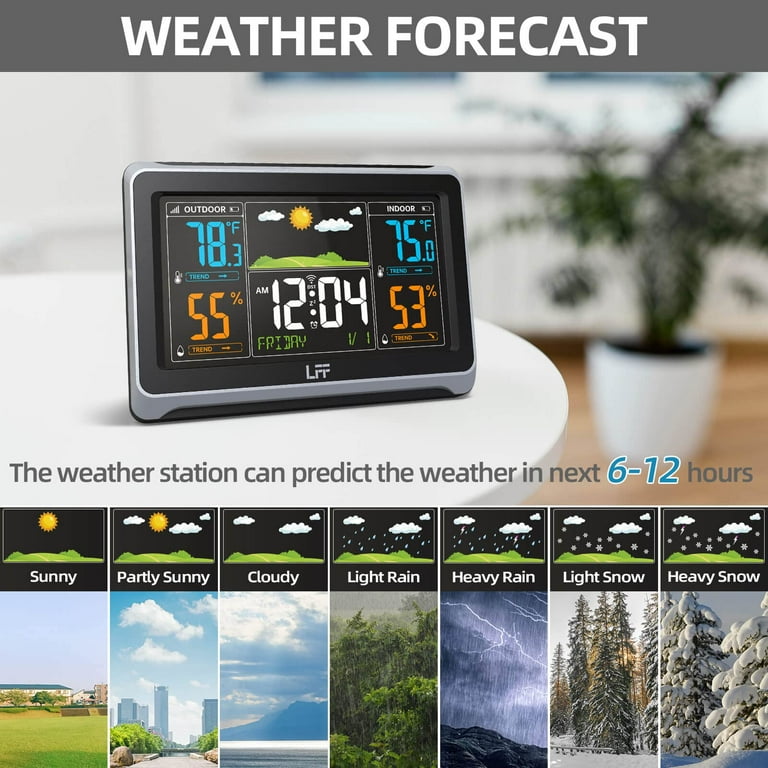Exploring the most recent Technological Developments in Weather Stations for 2024
Exploring the most recent Technological Developments in Weather Stations for 2024
Blog Article
Checking Out the Various Types of Professional Weather Condition Stations for Accurate Information Collection
When it comes to selecting the appropriate climate station for data collection, the market uses a range of alternatives customized to various requirements and settings. Allow's discover the nuances of these professional climate terminals to comprehend their distinct functionalities and determine the ideal fit for certain data collection needs.
Digital Climate Stations
In the realm of atmospheric instrumentation, digital weather condition stations stand apart as sophisticated tools for accurate data collection and evaluation. These innovative terminals are geared up with sensing units that catch a large range of climate criteria such as temperature level, humidity, barometric pressure, wind rate, and instructions. The data accumulated by digital climate stations is sent wirelessly to a central console or a computer system for real-time monitoring and evaluation.
One of the key benefits of digital climate stations is their capacity to supply high-resolution information with accuracy and integrity. This level of accuracy is essential for various applications, consisting of agriculture, emergency situation, study, and aeronautics feedback. Electronic climate terminals typically come with software program that permits customers to imagine the data in various formats like graphes and graphs, assisting in easier analysis and decision-making.
Wireless Weather Terminals
Building on the capabilities of digital weather stations, wireless climate stations use boosted benefit and versatility in information transmission and tracking. By utilizing cordless modern technology, these climate terminals remove the demand for difficult wired links, permitting for very easy setup in different locations. The wireless feature makes it possible for real-time information surveillance from remote locations, supplying meteorologists and weather condition enthusiasts with instant access to vital info.
Wireless climate terminals commonly contain sensing units that accumulate information on temperature level, humidity, barometric pressure, wind speed, and direction. These sensors wirelessly send the data to a main console or receiver, where it is processed and displayed for analysis. Some progressed cordless climate stations can even attach to the internet, allowing users to access their weather data remotely through mobile phones or computer systems.

Prosumer Weather Stations
What identifies Prosumer Weather Stations from standard consumer-grade climate stations? Prosumer Weather Stations bridge the space in between consumer-grade and professional-grade tools, providing advanced functions and higher precision than regular home weather terminals. These terminals are made for weather enthusiasts, amateur meteorologists, and small services that need even more specific data than what consumer models can offer.
Prosumer Weather condition Stations usually consist of a bigger array of sensing units to gauge added atmospheric criteria such as UV index, fallen leave dampness, and soil wetness. They also tend to have a higher level of toughness and integrity, making them appropriate for long-lasting outside use in various environmental problems.


Industrial Climate Stations
Industrial Weather condition Stations, likewise called meteorological surveillance systems, are specialized instruments made for exact and durable weather condition data collection in industrial setups. These stations are tailored to satisfy the unique needs of industrial procedures where accurate weather details is essential for safety and security, effectiveness, and decision-making procedures.
Industrial weather stations are outfitted with innovative sensors that can measure a wide range of atmospheric criteria such as temperature level, moisture, wind rate and direction, barometric stress, and precipitation (Weather Stations). These terminals are typically ruggedly constructed to withstand severe ecological conditions generally found in commercial environments
One key function of industrial weather condition stations is their capacity to give real-time information surveillance and evaluation. This enables industrial centers to expect weather-related threats, maximize operations based upon weather condition conditions, and make sure the safety and security of employees and equipment. In addition, commercial climate stations can be incorporated right into existing industrial control systems for smooth data management and automation.
Mobile Weather Condition Terminals
As opposed to fixed commercial weather terminals, mobile weather terminals use flexibility and movement for on-the-go information collection in numerous ecological settings. These small units are developed to be conveniently delivered to different places, making them optimal for area study, emergency situation response circumstances, farming, construction sites, and outdoor events.
Portable weather terminals generally include sensing units for gauging specifications such as temperature, moisture, barometric stress, wind rate, and wind instructions. Some progressed models may also feature extra sensors for monitoring rains, solar radiation, and UV levels. In spite of their small size, portable climate terminals are capable of supplying precise and trustworthy data comparable to that of larger, dealt with terminals.
One of the crucial benefits of mobile weather condition terminals is their quick implementation and ease of configuration. On the whole, mobile weather stations are indispensable devices for specialists requiring learn the facts here now portable, exact, and timely weather condition details in diverse setups.
Conclusion
To conclude, professional weather condition terminals come in various kinds such as digital, cordless, prosumer, industrial, and mobile. Each type provides distinct functions and abilities for precise information collection. Selecting the appropriate weather condition terminal depends upon the details demands and needs of the user. By comprehending the differences between these types browse around this web-site of weather condition terminals, people can make informed decisions to ensure they get the most reliable and specific weather condition information for their purposes.
Building on the capacities of digital climate stations, cordless weather condition terminals use improved ease and versatility in data transmission and tracking. Some advanced cordless weather terminals can also link to the internet, enabling users to access their weather condition data from another location via smart devices or computers.
Prosumer Weather condition Stations bridge the gap in between professional-grade and consumer-grade tools, providing even more sophisticated attributes and higher precision than typical home weather condition stations. Weather Stations. Generally, portable climate stations are important devices for specialists requiring mobile, accurate, and timely climate information in varied setups
By understanding the distinctions between these kinds of weather stations, people can make educated choices to ensure they get the most specific and trustworthy weather condition data for their functions.
Report this page